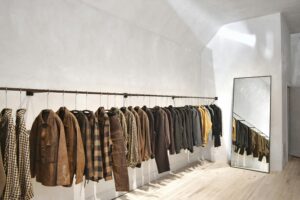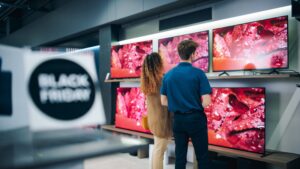Blog Post
Retail Visual SOPs in Specialty Retail: Heat Maps and Task Zones That Drive Retail Execution
August 12, 2025 in Retail Execution, Workforce Management

Written instructions don’t always cut it. When store teams are under pressure to execute seasonal displays, complete health checks, or prep for high-traffic hours, they need clear, visual direction—not long paragraphs of text.
That’s where retail visual standard operating procedures (SOP) come in. Turning tasks into easy-to-follow visuals reduces confusion, speeds up execution, and makes standards easier to repeat across every location.
This post breaks down how to build visual SOPs that actually work. You’ll also find examples and formats that store teams can use right away.
What is a retail visual SOP?
A visual SOP is an image-based guide that shows how to complete a task or set up a space. These are not traditional documents. They used annotated floor plans, display photos, or fixture diagrams to make expectations obvious.
Instead of listing 15 steps to build a front display, a visual SOP shows a floor map, calls out key zones, and includes sample photos. It’s faster to follow and more consistent to execute.
Why visual SOPs improve store execution
When tasks are unclear or time-sensitive, written instructions often lead to missed steps and inconsistent results. A display might lack signage. A table might be assembled out of order. Visual SOPs fix this by showing teams exactly what success looks like.
Benefits of using visual SOPs:
-Standardize promo rollouts and merchandising resets
-Reduce errors in safety and compliance tasks
-Speed up daily execution, especially during peak times
-Help new staff learn faster
-Improve task accountability across shifts
Learn about simplifying your retail task management.
Visual SOP formats that work
1. Store heat maps for task focus
A heat map highlights task zones in the store layout. This format helps teams prioritize by showing where attention is needed most.
Example: For a holiday weekend, the heat map flags the front display, high-traffic zones, and queueing area as priority for stocking and signage updates.
Best for: Time-based task flow, high-traffic prep, shift transitions
2. Photo SOP cards for display accuracy
Photo-based SOPs work well for visual merchandising. They show the correct setup for displays, endcaps, or windows, with annotations for SKUs, spacing, and signage placement.
Example: A back-to-school setup SOP includes photos showing exact product placement, fixture spacing, and sign location. Stores use it as a reference and submit their own photo as proof of completion.
Best for: Promotions, seasonal displays, vendor resets
3. Role-based task checklists
Visual SOPs can also be segmented by role. Managers, associates, and keyholders see only the tasks relevant to their position, often with photos or diagrams.
Example: Associates are assigned signage checks and shelf recovery in the first hour of their shift. Managers see a separate checklist with opening duties and compliance reviews.
Best for: Reducing task overlap, speeding up training, clarifying responsibility
Common pitfalls to avoid
Generic templates: A floor map that works for one store format may not apply to another. Tailor SOPs to store layouts.
Static PDFs: Printouts are hard to update and easy to ignore. Use mobile-friendly formats that allow instant updates.
No verification step: Without photo proof or checkboxes, you can’t track whether SOPs are completed correctly.
How to deploy visual SOPs at scale
1. Start with high-impact workflows. Choose one area like safety checks, seasonal displays, or promo launches.
2. Build SOPs by format or region. Avoid one-size-fits-all guides.
3. Deliver tasks digitally. Use a platform that supports real-time SOP sharing and tracking.
4. Require validation. Use photo uploads or checklists or time stamps.
5. Monitor results. Review completion rates, audit quality, and feedback from field leaders.
Visual SOPs make retail execution faster and more consistent
When every store has a visual reference for what good looks like, tasks get done faster and with fewer errors. Visual SOPs help teams follow the same playbook and maintain consistency, even during peak shopping periods.
From seasonal launches to daily maintenance, visual direction helps operators reduce friction, improve task clarity, and drive better execution across every location.
Book a demo with us today.
Recent Blog Posts

The Holiday Retail Cliff: How Retailers Can Maximize Sales After Cyber Monday 2025
As holiday shopping evolves, the retail calendar is shifting The peak no longer comes just around Black Friday and Cyber Monday Instead, what follows those headline dates—the “quiet” stretch...
READ MORE
Inventory Risk vs. Revenue Risk: How Retailers Can Respond Smarter When Overbought
Why merchandising execution matters Retailers walk a tightrope between inventory risk and revenue risk Overbuying can feel like a safety net, ensuring shelves stay full and customers never...
READ MORE
Merchandising Leadership in Retail: Turning Strategy Into Store-Level Success
Why merchandising execution matters Merchandising leaders hold significant influence over sales, margins, and vendor relationships But even the most brilliant strategy can fail if execution...
READ MORESchedule a Consultation With Our Retail Experts Today
Contact us today for a 15-minute conversation on how StoreForce can help you drive store performance and execution for less than the cost of 1 transaction per week. Learn how retailers all over the world are driving performance and customer experience through our solution made exclusively for Specialty Retail.
